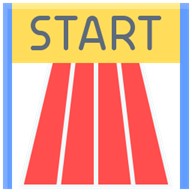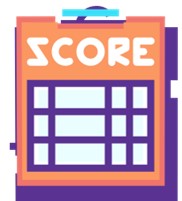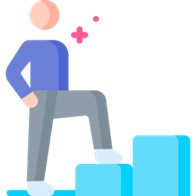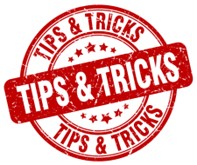👥 250,000 Trained
🏆 9 x Award Winners
⭐ 96% Review Rating
📈 24 Years of Proven Results
Written by Sean McPheat | 

Launching a successful Sales Contest isn’t just about the prizes or the thrill of competition.
Even with the best Sales Training, if the contest isn’t designed effectively, it can demotivate rather than inspire.
Crafting the right contest requires an understanding of your team’s dynamics, incentives that genuinely excite, and clear rules that level the playing field for all participants.
Dive in to learn how to create a sales contest that not only boosts performance but also fosters teamwork and camaraderie among your sales representatives.

A traditional sales contest rewards salespeople for the number of sales they make in a given period. You can focus on other key performance indicators, though, such as the number of cold calls made, the number of upsells someone makes in a week, etc.
There are a few different ways you can host a sales competition, too.
For example, you can organise a direct competition in which all salespeople compete against each other, a team competition in which teams of salespeople compete against other teams, and a goal-oriented competition in which multiple people are rewarded as they reach specific milestones.
Hosting a sales competition offers numerous benefits to your team members and the company as a whole.
The following are some of the most significant advantages these competitions (when properly organised and executed) can deliver:
There’s nothing like a little friendly competition to help your salespeople get over a slump and feel more motivated on the job.
If you’re a sales manager, then a sales contest can light a fire under your team and encourage them to set (and work toward) more ambitious goals.
In addition to increasing motivation, a sales contest also has the potential to push your employees to be more creative and innovative.
It’s easy for salespeople (and any other type of employee, for that matter) to find themselves repeating the same routine day after day. When you encourage them to work toward a new goal, though, you can help them break out of that rut and think of new ways to solve old problems.
Naturally, increased motivation and innovation can lead to improved performance among your sales team. Performance improvements, in turn, typically translates to an increase in sales and more revenue for the company.
Whether your company has experienced a sales plateau or you just want to boost profitability and drive sales performance, a sales contest can give you a jumpstart.
After you introduce the sales contest and work with team members to set and work toward new sales goals, you have an opportunity to watch your employees and monitor their performance.
These evaluations can help you get to know team members better (especially new employees or those who tend to fly under the radar) and identify top performers (as well as those who may need some extra coaching or attention to reach their full potential).
There are lots of ways that you can run a successful sales contest for your team.
Here are some sales contest examples, tips, and ideas to get you started:

When designing a competitive sales contest, you have to take into consideration the starting point of each individual salesperson. By that, I mean that you have to consider the experience, skills, closing averages and client base of each salesperson to design an equitable contest.
If you base the contest purely on bottom-line closed sales, then salespeople who have more experience and clients from whom they can get referrals will have an unfair advantage over newer, less experienced team members.

Come up with a method to make all salespeople equal for the purposes of the contest. Perhaps you consider the closing averages of each salesperson and design the contest so that those who don’t close deals as much can compete.
As an example, for the salesperson who has a 20% closing average to win or place high in the contest, they have to close four sales.
Then, for the sales rep with a higher closing average, like 25%, perhaps he or she must close five sales to place in the same bracket.

With such a method, both levels of salespeople compete hard and get better. The salesperson with the 20% closing average would have to complete 20 sales presentations or closing attempts to get the four sales.
However, the salesperson with the higher closing rate of 25% would also have to complete 20 closing attempts!
This creates an incentive for all salespeople to put forth a greater effort regardless of their skill level. In addition, it gives the newer salespeople an equal opportunity if they work hard enough.

If you decide to use such a system for the long term, then also create a bonus system, award or incentive to give to the salespeople who maintain the lowest handicap.
Level the playing field with a handicap system and watch more salespeople come in under par!

When deciding what kinds of sales contest prizes to offer, consider incentivising team members with one grand prize and a variety of smaller daily or weekly prizes.
These smaller prizes can help to keep your salespeople motivated throughout the course of the contest. They can also create a sense of momentum for employees who might be a bit unsure of themselves.
For example, after someone wins a daily or weekly prize, they might feel more confident in their ability to earn the grand prize, meaning they’ll push themselves harder and continue to perform at a higher level.
If this is an avenue you’d like to explore further, check out our list of sales incentive ideas.

Another way to break the contest down into smaller pieces – and keep employees motivated – is to recognise one person as the salesperson of the month.
You could also put those people in the running for salesperson of the quarter or year.
Similar to the point made above, monthly prizes like this boost motivation and give more people an opportunity to be recognised and celebrated for their hard work.

It’s easy to get hung up on the number of sales your team members make. Those aren’t the only metrics worth monitoring, though.
For example, you can hold contests to reward those who make the most calls in a week, those who have improved most in the last month, etc.
Focusing on different metrics and encouraging improvement in all areas of the sales process will result in better overall performance for your team members (and better results all around).

Consider making your sales contest an opportunity for lower-performing team members to learn from higher performers.
By pairing top and bottom reps and encouraging them to work as teams, you give lower performers a chance to improve their skills and experience what it feels like to be at (or at least closer to) the top.
The higher-performing sales rep on the team also gets a chance to sharpen their skills (especially when it comes to coaching and training others, which can help them prepare for other positions in the future).

Don’t just focus on the team members who produce the greatest number of sales. Focus on those who are working the hardest, have heard the most “nos,” and continue to persevere.
This approach rewards your salespeople for their commitment to the process, not just the end result.

Regardless of the types of sales contests you’re drawn toward, these tips will help you plan an effective one that gets your team excited and eager to compete:
When developing a contest for sales team members, make sure you’re setting specific goals.
It doesn’t matter if you want to see who books the most meetings or who increases sales revenue by the largest amount. Whatever you pick, just remember to be specific, not just when it comes to what people are working toward but how long they have to achieve or exceed the goal (a week, a month, three months, etc.).
Resist the urge to over-complicate the contest. Even if you decide to offer daily or weekly prizes or implement any of the other ideas shared above, strive to keep things as simple as possible.
Clearly outline the rules and share them with your team, too. That way, everyone is on the same page regarding what they can and can’t do.
Some people make the mistake of trying to implement too many contest ideas for employees in sales at once. For example, they might try to set records for sales calls, meetings, retention rates, and conversions all at the same time.
The problem with this approach is A) it goes against the tip above about not over-complicating things, and B) it stretches your team members too thin. They may try to accomplish too many things at once, resulting in them not making any significant accomplishments at all.
Give your salespeople an opportunity to share feedback and offer ideas and suggestions for future contests. What’s the point of hosting a sales contest if nobody wants to participate because they don’t like the structure, the rules, the prizes, etc.?
Encourage your team to deliver feedback and, whenever possible, follow up and implement their suggestions. Doing so can further motivate your salespeople. It also helps to refine your contest and make it better in the future.
Check-in with team members throughout the contest not only to seek feedback but to make sure they’re doing their best to achieve their goals.
Talk to individual team members and teams or groups and discuss their accomplishments and the challenges they’ve encountered. Make time to offer guidance and discuss potential improvements to people’s sales strategies as well.
Yes, your salespeople are at work. That doesn’t mean the contest can be fun, though.
If your team members have fun with the contest, they’ll be more inclined to keep participating and trying their best to achieve their goals. If they’re committed to the contest and continuously strive to do their best, you’ll see a natural increase in sales productivity for the department.
Make sure you uphold your end of the bargain and deliver the rewards you promised to your team. If you don’t make good on your promise, people will stop participating in the contest.
On a similar note, don’t offer anything you aren’t sure you can deliver on. For example, if you don’t get the final say over whether or not someone can get extra days of paid time off, don’t make that a reward.
Keeping your team motivated can feel like a full-time job — and you have enough to do and worry about as a sales manager. Sales contests are an excellent option for boosting motivation and engagement and increasing performance.
Have you never hosted a sales contest before? Use these fun sales contest ideas and tips as a jumping-off point to develop an effective contest that your salespeople want to participate in (and that provides the greatest benefits for your team and the company).
If you’re looking for more assistance in guiding and motivating your sales team, explore MTD Sales’ range of training solutions.
We offer Selling Skills Training providing comprehensive training solutions to enhance your team’s skills.
Additionally, we provide a Sales Competency Assessment that accurately evaluates your sales team’s expertise, ensuring targeted and effective development.
Happy Selling!
Sean

Sean McPheat
Managing Director
MTD Sales Training
Updated on: 20 February, 2024
Originally posted: 24 April 2012
Related Articles

Search For More
